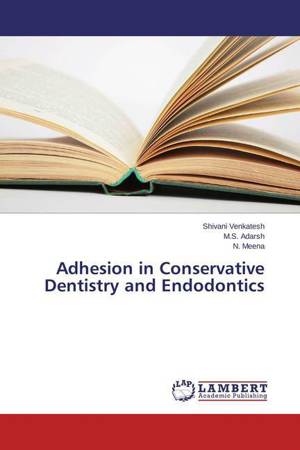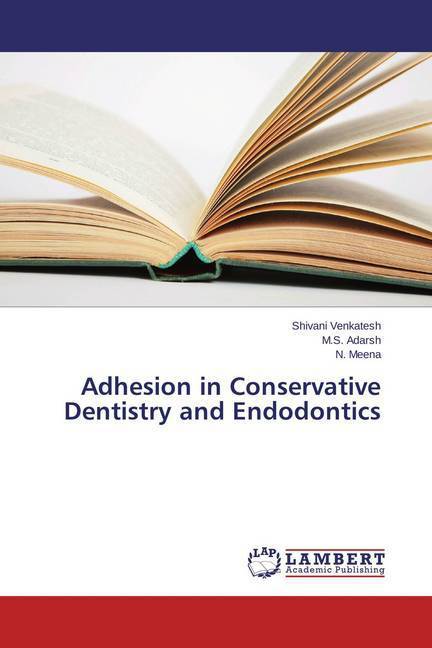
- Afhalen na 1 uur in een winkel met voorraad
- Gratis thuislevering in België vanaf € 30
- Ruim aanbod met 7 miljoen producten
- Afhalen na 1 uur in een winkel met voorraad
- Gratis thuislevering in België vanaf € 30
- Ruim aanbod met 7 miljoen producten
Zoeken
Adhesion in Conservative Dentistry and Endodontics
Shivani Venkatesh, M. S. Adarsh, N. Meena
Paperback | Engels
€ 68,45
+ 136 punten
Omschrijving
Adhesive dentistry has evolved rapidly. There are two main incentives that have driven this revolution. First- is the want and need of the patient. They desire not only functionally and anatomically sound restorations, but also esthetically pleasing ones. Second- from our perspective, the need of the hour is 'minimally invasive' or 'minimum intervention' care. This means that only the lost and diseased tooth tissue is replaced by the restorative material that is directly bonded to the remaining sound tissue. Another school of thought is 'maintenance and repair' rather than replacing entire restorations (exhibiting marginal discoloration and/ or defects) and this has further boosted the use of adhesive technology in diverse applications of everyday clinical practice. Little did Buonocore appreciate the impact of his discovery on the quality of dental care more than 50 years later.
Specificaties
Betrokkenen
- Auteur(s):
- Uitgeverij:
Inhoud
- Aantal bladzijden:
- 192
- Taal:
- Engels
Eigenschappen
- Productcode (EAN):
- 9783659356209
- Verschijningsdatum:
- 18/02/2015
- Uitvoering:
- Paperback
- Afmetingen:
- 150 mm x 220 mm
- Gewicht:
- 290 g

Alleen bij Standaard Boekhandel
+ 136 punten op je klantenkaart van Standaard Boekhandel
Beoordelingen
We publiceren alleen reviews die voldoen aan de voorwaarden voor reviews. Bekijk onze voorwaarden voor reviews.








